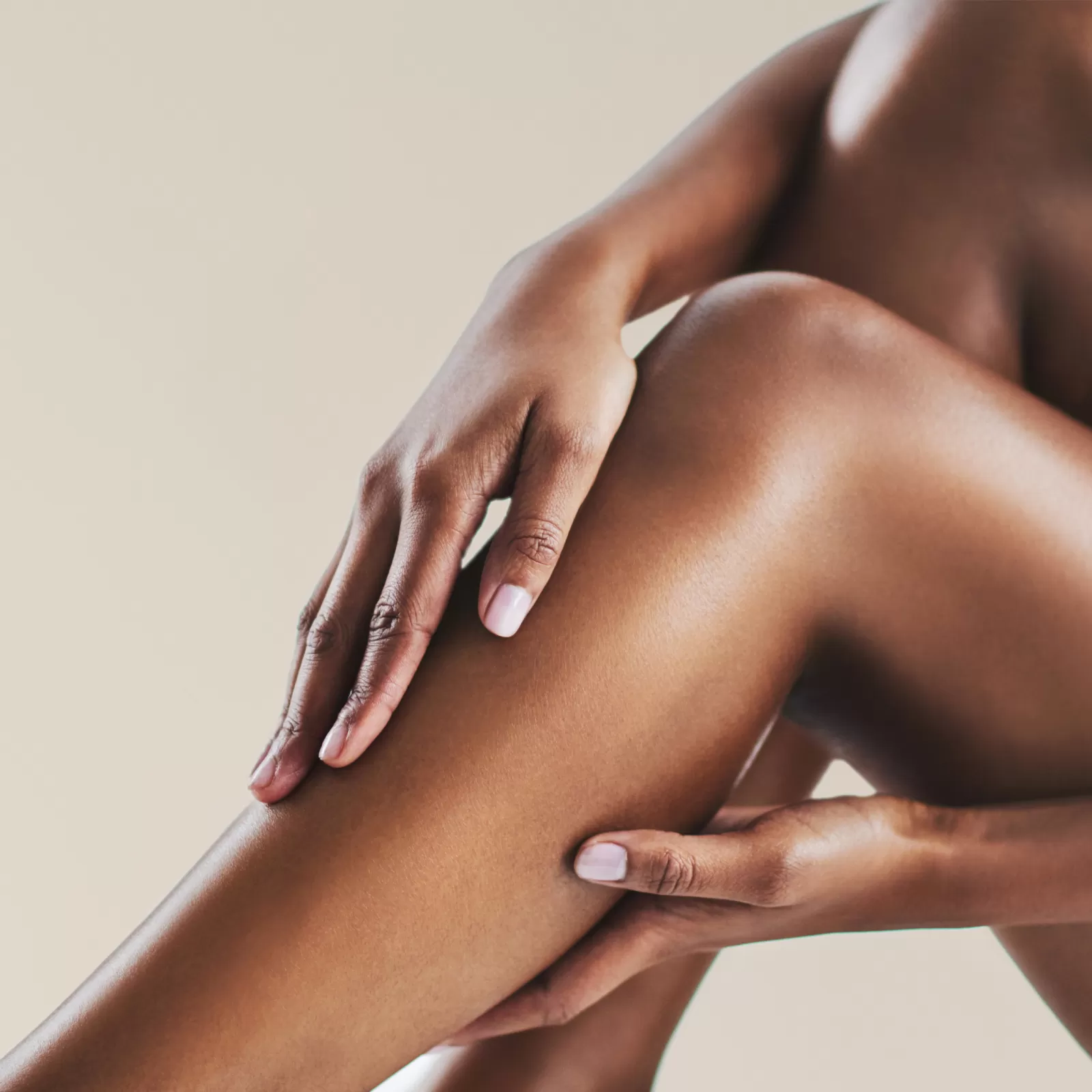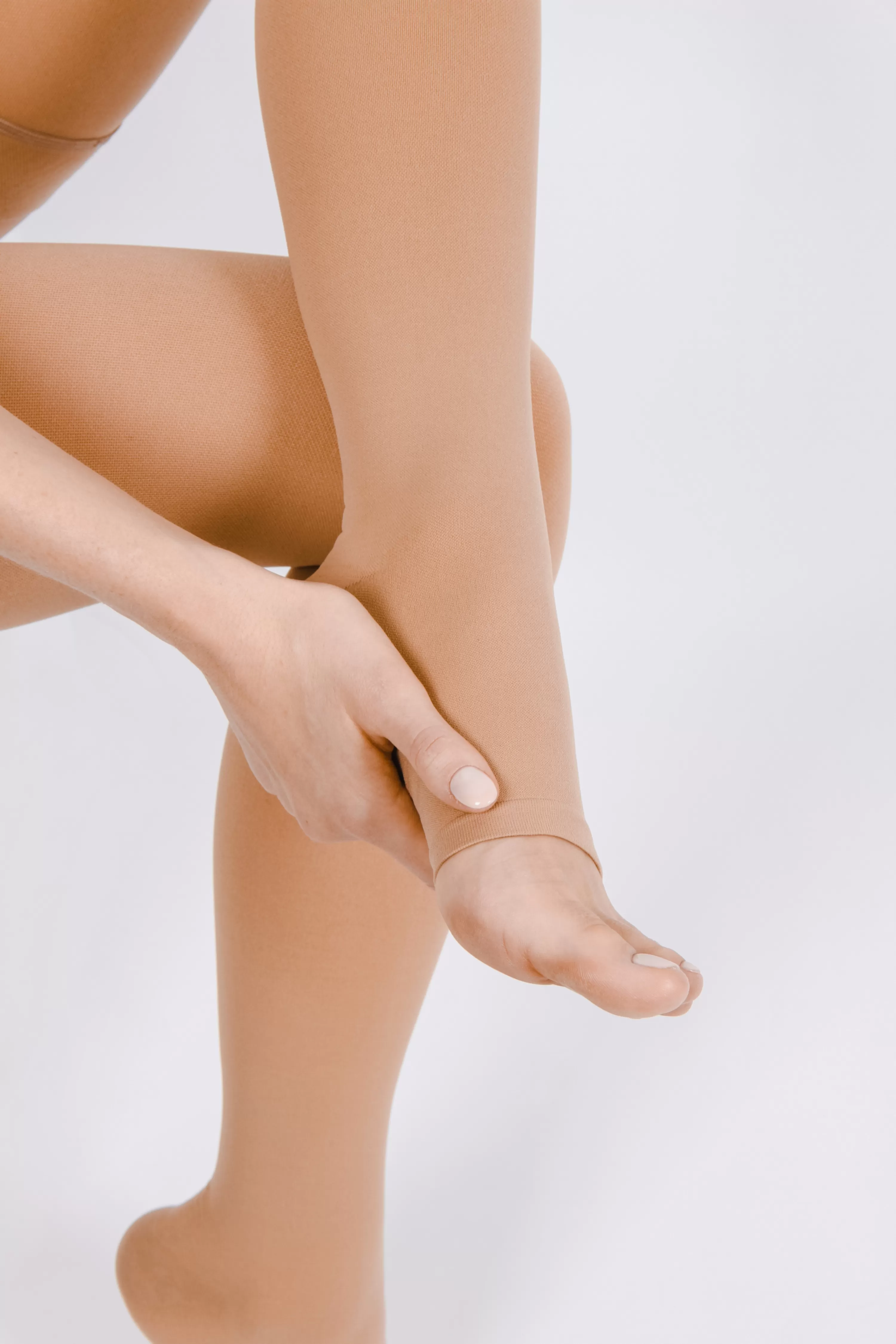Compression Stocking
Compression Stocking
Compression Stocking
Treatment
Overview
Overview
Compression therapy plays a vital and effective role in managing varicose veins and spider veins. If you’re getting treatment from these conditions, then compression therapy, most likely in the form of stockings, will almost always be a part of your treatment plan
At The R Clinic we use medical grade compression stockings. This compression strength is recommended for varicose veins and post-treatment recovery. This type of compression stocking is more intense than the stockings you may receive on an airplane flight or in the hospital. It is important that the right type of stocking and compression strength is used, otherwise the stockings can be ineffective. We encourage all patients to speak with our clinical team to ensure that the appropriate grade of compression is used.
How it works
How it works
Compression therapy is based on the simple and efficient technique of applying pressure around the leg. Graduated compression (strongest at the ankle and decreasing going up the leg) assists the calf muscles to perform their pumping action more efficiently to return blood to the heart. With the right pressure, the stretched vein walls are gently squeezed together, allowing the valves to close, aiding overall circulation.
Why we use compression stockings?
Why we use compression stockings?
There are 4 main reasons we use lower limb compression stocking:
- Relief symptoms such as aching
- Prevent venous thrombosis (DVT)
- Manage complications of chronic venous insufficiency
- Treat acute thrombosis either deep or superficial
Tips to making stockings easier to use
Tips to making stockings easier to use
- Consider using a device such as the EzyAs
- Wear washing-up gloves (better grip and less likely to catch nails and tear them)
- Make sure the leg is dry. Use talcum powder
- Use the silk insert if one came with the stocking
If you are using stockings for control of swelling:
- Put them on before you get out of bed in the morning (have a fresh pair next to your bed)
- Have your bath/shower last thing at night
- Treatment Time – Based on individual circumstances
Preparation & Aftercare
Preparation
Preparation
- Book an appointment with our medical team, so we can properly measure the size of your leg and select the most appropriate size of stocking for you
- For a patient who has poor blood supply, we will also measure arterial pressure at your ankle so that the compression stocking won’t compromise your blood supply
During fitting
During fitting
To ensure a good fit, four measurements of your leg need to be taken; at the ankle, calf, thigh, and leg length.
- Ankle circumference – measure at the narrowest part of the ankle
- Calf circumference – measure at the widest part of the calf
- Thigh circumference – measure the thigh at the groin
- Leg length – measure from the floor up to the gluteal fold
Aftercare
Aftercare
The use of compression stockings is important to take the best possible care of your legs following varicose vein treatment. You will need to wear them for a specified time (usually between 14-21 days, day and night, depending on the type of treatment you have had) to promote healing, reduce discomfort, and prevent hemosiderin staining or DVT.
It is also recommended to avoid exposure to the sun in the days after your treatment.

FAQ
Have further questions or want to learn more?
Why I should use compression stockings?
Compression stockings (or socks) are a special kind of elastic hosiery that supports healthy blood circulation and helps prevent a variety of health conditions, including:
- chronic venous insufficiency
- spider veins
- varicose veins
The pressure that these stockings put on your ankles and legs compresses the surface arteries and veins, helping the vein valves to function properly and blood to flow back to your heart without obstructions.
How to choose the right compression level?
You should always talk to your doctor to get advice about the right compression level. There are four main levels of compression:
- mild compression, which should be used if you have mild chronic venous insufficiency to support healthy blood flow so your legs can feel lighter
- moderate compression, which is more effective and is usually recommended once you’re experiencing symptoms of spider or varicose veins
- firm and extra firm compression, which are typically recommended by a doctor in more serious cases of various venous diseases, including deep vein thrombosis, leg ulcers, and lymphatic edema
What is the benefit of using medical grade compression stockings?
- Increasing speed of blood flow – the stockings compress the major veins in the legs and reduce their diameter, thereby increasing the velocity of the flow.
- Reversing venous hypertension – When blood pools because of venous insufficiency and veins “pop-out” on the skin surface, pressure is put on the vein walls in these areas, called venous hypertension. Compression stockings support the walls, preventing them from overstretching, effectively reversing the hypertension.
- Supporting the calf-muscle pump – The calf-muscle pump is a collection of muscles in the legs that help circulation when they contract by squeezing blood along the veins toward the heart. Compression helps amplify and support this process
- Improving lymphatic drainage and preventing swelling – Compression supports lymphatic drainage of a chronic build-up of fluid and swelling in the limbs.
How to take care of compression stockings?
Taking proper care of your compression stockings isn’t difficult. But there are a few things to keep in mind to make them last as long as possible without losing their strength and benefits:
- Use cold or mild temperature water.
- Hand-wash your stockings instead of using a washing machine.
- Don’t use fabric softener — only soap or mild detergent.
- Never use a dryer. Hang your stockings to dry instead.
How long should compression stockings be worn?
For patients wanting symptomatic relief stockings should be worn on an as needs basis. For a patient who have had vein treatments anywhere from 3-14 days is usually recommended.
Risks of compression stockings?
Because compression stockings are tight, they are often difficult to put on. For this reason, ideally, no lotion should be applied to the leg before applying them.
Using compression stockings can have side effects, including:
- Broken skin
- Irritation
- Discomfort
- Temporary dents in the skin
- Stockings that are wrinkled, worn incorrectly, or the wrong size are more likely to cause problems.
Who could benefit from compression socks?
People with varicose veins, lymphoedema, deep venous insufficiency, swelling of ankles and post varicose vein treatments. We also recommend compression for people in certain types of professions. These include:
- Retail workers and cashiers
- Office jobs
- Truck drivers
- Nurses
- Hospitality workers
- Flight Attendants
- Retail workers and cashiers
- Teachers
If I wear compression stocking, do I still need varicose vein treatment?
Using medical compression stockings to support varicose veins is a short-term measure, not a cure. We know that left untreated, varicose veins do not correct themselves and medical intervention by a vein doctor or phlebologist is necessary. However, compression stockings have been shown to relieve symptoms and prevent worsening of the condition.
Here at The R Clinic, we have a range of non-invasive treatments for varicose veins including endovenous thermal ablation (EVLA & RFA), ultrasound guided sclerotherapy, VenaSeal (medical adhesive). Our vein specialist Dr Mel will select the right treatment for you based on the severity and location of the problem vein.
